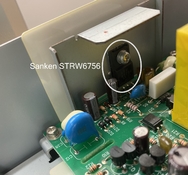Tom Kershaw
Subscriber
My Coolscan 9000 refused to switch on a few days ago, after having been used as normal the previous day. This website: https://www.shtengel.com/gleb/Nikon_8000_9000_power_supply.htm - suggests a particular integrated circuit is usually at fault.
https://www.semicon.sanken-ele.co.jp/sk_content/str-w67xxseries_an_en.pdf - if anyone else has suffered this problem on Photrio - is there anything else that is likely to have gone wrong? - the continuity of the internal fuse is fine.
I've seen recommendations for https://lincolnscan.co.uk/ as a repair option but it would be useful to have some more general idea.
https://www.semicon.sanken-ele.co.jp/sk_content/str-w67xxseries_an_en.pdf - if anyone else has suffered this problem on Photrio - is there anything else that is likely to have gone wrong? - the continuity of the internal fuse is fine.
I've seen recommendations for https://lincolnscan.co.uk/ as a repair option but it would be useful to have some more general idea.
Attachments
Last edited:





 .
.